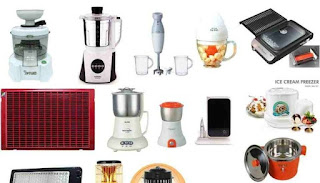Electrical equipment protection class
Electrical equipment protection class
All electrical equipment that uses mains voltage must provide at least two levels of protection to the user. This is to ensure that if one layer of protection fails, the second layer still has a backup. This makes electrical hardware extremely protected to utilize. Equipment can be Class 1 or Class 2.
When performing a PAT test, it is important to determine the device class first because Class 1 devices are tested separately from Class 2 devices.
Depending on exactly how protection is provided, electrical appliances are placed into 5 classes of equipment construction namely Class 1, 2, 3, 0, 01. The most important of these are Classes 1 and 2 All classes are described for completeness down below.
 |
| Airalo coupons, promo codes & deals for Dec. 2022. Most popular: 35% Discount Coupon - Unlimited. |
Category 1
Protection here is provided by a combination of insulation and the use of a ground grid. This is evidenced by the reference to an electrical fire that has been isolated.
An open plug has three wires connected to the live, neutral, and ground pins. Inside the ignition, the brown live wire and the blue neutral wire are connected to a plastic connector. The green/yellow earth connects to the metal can of its fire.
*******************************************
YOU MAY LIKE THIS
Basic hardware repair tips
The user is protected from electric shock by the plastic insulation of the conductor. Holds the live and neutral wires and prevents them from touching the metal enclosure of this electrical fire. This plastic insulation of a conductor is known as core insulation.
If this basic insulation fails, let's say the user of the fire may receive an electric shock due to excessive movement of the wire where it touches the metal enclosure if the ground wire is not present.
By connecting the electric fire can, the ground wire puts all of these metals into the ground potential. This means that it is impossible to get an electric shock even if the metal firebox is directly connected to an electrical voltage. A fuse plug or main fuse box blows to actually protect the user.
 |
| FAT COUPON |
In short, in Class 1 devices, the user is protected by a combination of basic isolation and the provision of a ground connection, thus providing two levels of protection.
When PAT tests Class 1 equipment, ground continuity, and insulation resistance are tested.
Class 2
In a Class 2 device, the user is protected by at least two layers of insulation. For this reason, Class 2 equipment is also known as double insulation doesn't need a ground association.
This is best shown by looking inside a Class 2 power drill that has been opened. Inside one can see that the plastic connector provides the primary insulation, with additional insulation provided by the plastic jacket of the drill.
The user is thus protected by two separate layers of insulation. When PAT tests Class 2 equipment, only insulation resistance is tested.
Class 2 equipment is always indicated by the double box symbol on the rating plate.
*******************************************
RECOMMENDED FOR YOU
The Power of Phytonutrients
Class 3
Equipment constructed to the Class 3 standard is designed to be supplied from a special safety isolation transformer whose output is known as Safety Extra-Low Voltage, or SELV. It should not exceed 50V AC and is usually less than 24V or 12V. All Class 3 devices are marked with a special symbol. Class III equipment has no ground use
The safety isolation transformer design takes care of the electrical safety of Class 3 devices where the separation between the windings is equivalent to double insulation. The adapter is marked as suitable for use with Class III devices
.jpg) |
| TOP COUPON CODES |
Class 0 and 01
This equipment is not intended for normal use in commercial or residential settings. It is introduced here just for culmination.
Class 0 equipment only relies on basic insulation to protect against electric shock. For this reason, they do not have Level 2 protection and are not allowed to sell the copper bulb shown here is an example of a two-wire, metal-cased instrument with only core insulation. There is no requirement for a ground connection to the lamp holder.
In Class 01 machines there is provision for a ground connection, but it is wired with a two-core cable or has only a two-pin plug, so a ground connection cannot be made. In AS Class 0 equipment, one relies solely on basic insulation to protect against electric shock. Because they only have Level 1 protection, Class 01 devices are not approved for sale
*******************************************
YOU MUST READ THIS
The Power of Mindful Eating
If one encounters a Class 0 or Class 01 device during the PAT, it may fail.
Class I and Class II selectors
Because the PAT performed on Class 1 and Class 2 devices is different, it is important to distinguish one from the other. No other area of the PAT exam causes more confusion and there are many myths surrounding it. It would be useful to show a portion of these.
If there is a fuse
FAQ
What is class 2 electrical?
A Class II or double-insulated electrical appliance uses reinforced protective insulation in addition to the basic insulation. Therefore, it is designed in such a way that it does not require a protective connection to the electrical earth.
What is Class A IEC?
The three classes are defined as follows: Class I - A layer of basic insulation and a grounded conductive chassis. Class II - Double insulation (basic + supplementary) or reinforced insulation. Class III - No protection is required as the input voltage is not hazardous
What are Class 2A and 2B?
The basic motorcycle license, which entitles you to ride bikes up to 200cc, is called Class 2B. A year after you get your Class 2B license, you'll be eligible to register for Class 2A, which entitles you to ride bikes up to 400cc.
*******************************************
ARTICLE RELATED TO:
*******************************************
What Does Cost Per Page Mean?
In the world of printing and document management, understanding the concept of "cost per page" is crucial for both businesses and individuals. This term, often abbreviated as CPP, represents the cost associated with printing a single page of a document. Whether you are managing a home office or running a large corporation, knowing your cost per page can help you optimize your printing expenses, enhance budgeting accuracy, and ultimately save money. This article delves into the intricacies of cost per page, its importance, how it is calculated, and strategies to reduce it.
Understanding Cost Per Page
Cost per page is the total cost incurred for printing a single page, including all associated expenses such as ink or toner, paper, and maintenance of the printer. This metric is essential because it provides a clear picture of the ongoing costs of printing, beyond just the initial purchase price of the printer.
Components of Cost Per Page
Ink or Toner Costs: This is usually the most significant component of the cost per page. The price of ink cartridges or toner can vary widely based on the printer model and the type of printing (color vs. black and white).
Paper Costs: The quality and type of paper used also impact the overall cost. Higher-quality paper tends to be more expensive.
Printer Maintenance and Depreciation: Regular maintenance, repairs, and the gradual depreciation of the printer’s value over time contribute to the cost per page.
Energy Consumption: The electricity used by the printer during operation can add to the total cost, although this is typically a smaller component compared to ink and paper.
Other Consumables: This includes items like printer drums, fusers, and other replaceable components.
How to Calculate Cost Per Page
Calculating cost per page involves a straightforward formula: Cost Per Page=Cost of ConsumablesNumber of Pages PrintedCost Per Page=Number of Pages PrintedCost of Consumables
Here's a step-by-step breakdown:
Calculate Paper Costs: Add the cost of the paper. For example, if a team of 500 sheets costs $5, the cost per sheet is $0.01.
Account for Energy Consumption: Estimate the electricity cost for printing. This can be calculated based on the printer’s wattage and the duration of use.
For instance, if an ink cartridge costs $50 and prints 500 pages, the cost of ink per page is: Ink Cost Per Page=50500=0.10 USDInk Cost Per Page=50050=0.10 USD
Understanding your cost per page is vital for several reasons:
Cost Control: Identifying high costs can lead to measures that reduce expenses, such as opting for more cost-effective printing solutions.
Pricing Strategy: For businesses offering printing services, knowing the cost per page is essential for setting competitive prices.
Resource Management: It aids in better management of resources, ensuring efficient use of ink, paper, and energy.
Factors Affecting Cost Per Page
Several factors can influence the cost per page, and understanding these can help in managing and reducing printing costs.
Printer Type: Laser printers generally have a lower cost per page compared to inkjet printers, especially for high-volume printing.
Usage Patterns: Frequent, large print jobs can reduce the cost per page due to economies of scale, whereas sporadic printing can increase costs.
Third-Party Consumables: Using third-party or remanufactured cartridges can reduce ink or toner costs, though this may affect print quality and printer longevity.
Duplex Printing: Printing on both sides of the paper can cut paper costs in half, effectively reducing the overall cost per page.
Strategies to Reduce Cost Per Page
Reducing the cost per page is a goal for many organizations. Here are several strategies to achieve this:
Optimize Print Settings: Use draft mode for non-critical documents to save ink. Adjust print quality settings to the minimum necessary level.
Bulk Purchasing: Buying ink, toner, and paper in bulk can reduce costs through volume discounts.
Use Print Management Software: Software solutions can help track printing usage, identify wasteful practices, and optimize print jobs.
Adopt Digital Alternatives: Reduce the need for printing by using digital documents and sharing electronic files whenever possible.
Employee Training: Educate staff on efficient printing practices to reduce unnecessary prints and waste.
Implement Print Policies: Set policies for printing, such as double-sided printing and restrictions on color prints.
The Role of Technology in Managing Cost Per Page
Advancements in technology play a significant role in managing and reducing the cost per page. Innovations in printer technology, software solutions, and consumables have a direct impact on printing costs.
Printer Technology
Modern printers come with a variety of features designed to reduce costs and improve efficiency. For example, some printers have ink-saving modes, automatic duplex printing, and high-capacity cartridges that lower the cost per page.
Managed Print Services (MPS)
Managed Print Services involve outsourcing the management of your printing needs to a third-party provider. MPS providers analyze your printing habits, recommend cost-saving measures, and take over the maintenance and supply of consumables, often leading to significant cost reductions.
Print Management Software
Print management software helps monitor and control printing activities within an organization. These tools provide insights into printing patterns, identify areas of wastage, and enforce print policies, all contributing to a lower cost per page.
Environmental Considerations
Conclusion
Understanding and managing cost per page is essential for anyone who regularly uses a printer, from individuals to large businesses. By breaking down the components that contribute to this cost and implementing strategies to reduce it, significant savings can be achieved. Moreover, advancements in technology and the adoption of efficient printing practices not only help in lowering costs but also contribute to environmental sustainability.
By being mindful of your printing habits, regularly maintaining your equipment, and making informed choices about consumables and printer settings, you can effectively manage and reduce your cost per page. This not only helps in achieving financial savings but also ensures that your printing operations are efficient and environmentally friendly.
IMPORTANT VIDEO
Electrical Safety Training in Hindi (Part 1)
Electrical Safety Tools & Equipments || PPE Personal Protective Equipment for Electrical safety
 |
| Google Hacks VSeries |
 |
| AMAZON FASHION |





















